
- Floral Services
- About
- Pricing
- Preservation
-
Portfolio
- Pumpkin Flowers Gallery
- Commercial Floral Gallery
- Scent Free Arrangement's
- Wedding Flowers
- Rental Furniture or Equipment
- EZ Vase
- Gifts & Gift Basket Gallery
- Jewelry & Bridal Accessories
- Just Flowers Gallery
- Budding Impressions 2011
- Budding Impressions 2012
- Budding Impressions 2014
- Budding Impressions 2015
- Contact
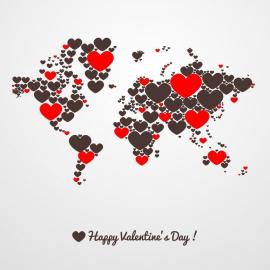
How to Say "Happy Valentine's Day" All Around the World
Valentine's Day is an opportunity for people in Canada to
tell somebody that they love them in a romantic way. It falls on February 14,
the name day of two saints, St Valentine of Rome and St Valentine of Terni.
With Valentine's Day just around the corner, stores are flooded with candy
hearts, chocolates and stuffed animals. In Canada the shelves are brimming with
romantic gestures including giving flowers, teddy bears, boxes of chocolate and
mylar balloons. Some people celebrate Valentine's Day lavishly. They may treat
their partner to a themed meal in a restaurant or a night in a luxury hotel.
Others may take short breaks or vacations on Valentine’s Day.
Valentine's Day can also be an occasion for a more general
celebration of love and appreciation of people who are personally important to
an individual. School children may help decorate their classrooms with hearts
and spring birds and make cards or presents for their parents. Stores may also
sell Valentine's Day themed cakes, cookies or candy. Being a flower shop, we
decorate our shop with heart shapes, pairs of birds, cute teddy bears, Cupid
and his arrows and couples kissing or embracing in the colors of red and pink.
Canadian Schools hold Valentine's Day parties or dances on or near February 14
for teenagers and young adults.
Valentine's Day is not a public holiday. Schools,
businesses, organizations, post offices and stores are open as usual. Public
transport services run to their usual timetables. Restaurants and hotels may be
busy as many people take out their partner for a romantic meal or night away in
a hotel, but the whole country turns up the romance for one day, and that is
February 14th.
However, not every country turns to greeting cards and
heart-shaped candies to declare love. Some exchange wooden spoons and pressed
flowers, while others hold a special holiday for the loveless to mourn their
single lives over black noodles and bonfires.
1. Denmark
“Gelukkige Valentijnsdag” Dutch
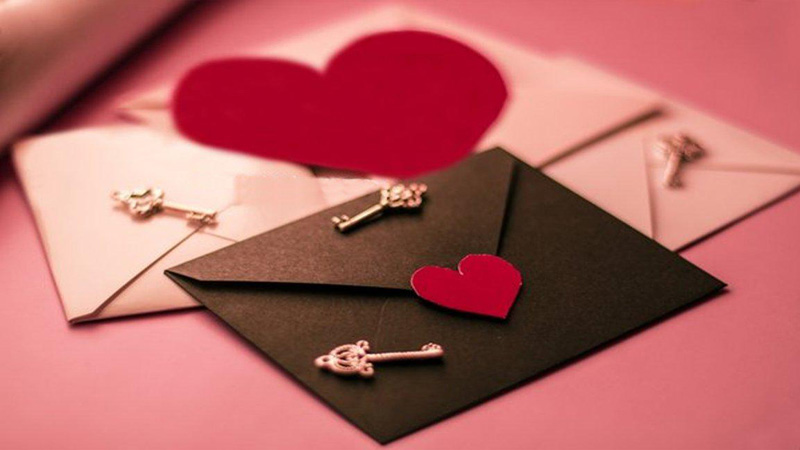
Although Valentine's Day is a
relatively new holiday in Denmark (celebrated since the early 1990s according
to the Ministry of Foreign Affairs of Denmark), the country has embraced
February 14th with a Danish twist. Rather than roses, friends and sweethearts
exchange pressed white flowers called snowdrops.
Another popular Danish Valentine's Day
tradition is the exchange of "lover's cards." While lover's cards
were originally transparent cards which showed a picture of the card giver
presenting a gift to his sweetheart, the term is now synonymous with any card
exchanged on Valentine's Day.
On February 14th, men also give women
Gaekkebrev, a "joking letter" consisting of a funny poem or rhyme
written on intricately cut paper and signed only with anonymous dots. If a
woman who receives the Gaekkebrev can correctly guess the sender, she earns
herself an Easter egg later that year.
2. France
“Joyeux Saint-Valentin” French
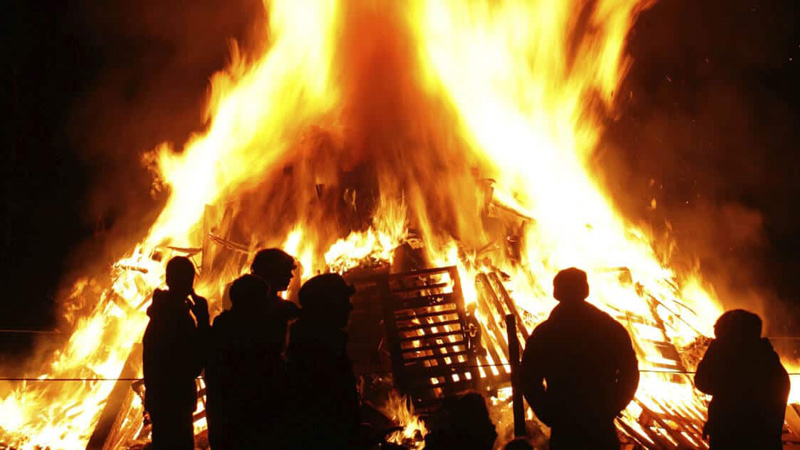
With a reputation as one of the most
romantic destinations in the world. It is a little wonder France has long
celebrated Valentine's Day as a day for lovers.
It's been said that the first
Valentine's Day card originated in France when Charles, Duke of Orleans, sent
love letters to his wife while imprisoned in the Tower of London in 1415.
Today, Valentine's Day cards remain a popular tradition in France and around
the world.
 Another traditional Valentine's Day
event in France was the loterie d'amour, or "drawing for love." Men
and women would fill houses that faced one another, and then take turns calling
out to one another and pairing off. Men who weren't satisfied with their match
could simply leave a woman for another, and the women left unmatched gathered
afterward for a bonfire.
Another traditional Valentine's Day
event in France was the loterie d'amour, or "drawing for love." Men
and women would fill houses that faced one another, and then take turns calling
out to one another and pairing off. Men who weren't satisfied with their match
could simply leave a woman for another, and the women left unmatched gathered
afterward for a bonfire.
During the bonfire, women burned
pictures of the men who wronged them and hurled swears and insults at the
opposite sex. The event became so uncontrollable that the French government
eventually banned the tradition all together.
3. South Korea
“Haengboghan Ballentain Dei” Korean

Valentine's Day is a popular holiday
for young couples in South Korea, and variations of the holiday are celebrated
monthly from February through April. The gift-giving starts on February 14th,
when it's up to women to woo their men with chocolates, candies and flowers.
The tables turn on March 14th, a holiday known as White Day, when men not only
shower their sweethearts with chocolates and flowers, but up the ante with a
gift.
And for those who don't have much to
celebrate on either Valentine's Day or White Day, there is a third holiday:
Black Day. On April 14th, it's customary for singles to mourn their solitary
status by eating dark bowls of Jajangmyeon, or black bean-paste noodles.
4. Wales
“Valentines Dydd Yn Hapus” Welsh
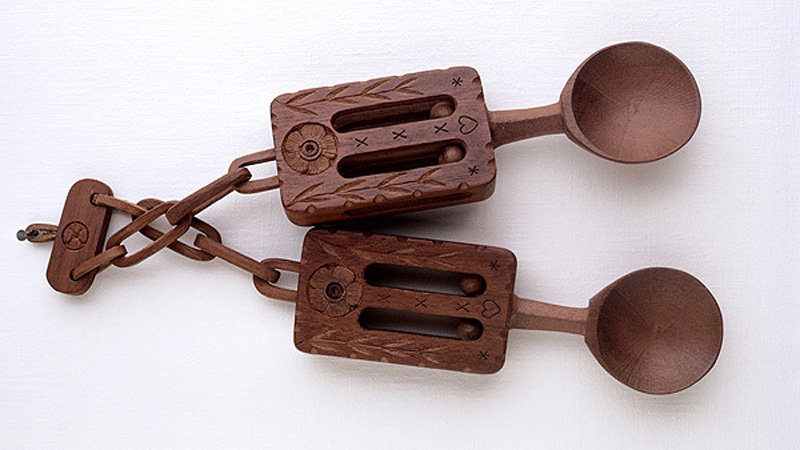
You won't find the Welsh celebrating
Saint Valentine -- instead, people in Wales celebrate Saint Dwynwen, the Welsh
patron saint of lovers, on January 25th.
One traditional romantic Welsh gift is
a love spoon. As early as the 17th century, Welsh men carved intricate wooden
spoons as a token of affection for the women they loved. Patterns and symbols
were carved into these love spoons, each signifying a different meaning. A few
examples include horseshoes, which stand for good luck; wheels, which symbolize
support; and keys, which symbolize the keys to a man's heart.
Today, love spoons are also exchanged
for celebrations such as weddings, anniversaries and births.
5. China
“Gíngrén Jié” Chinese
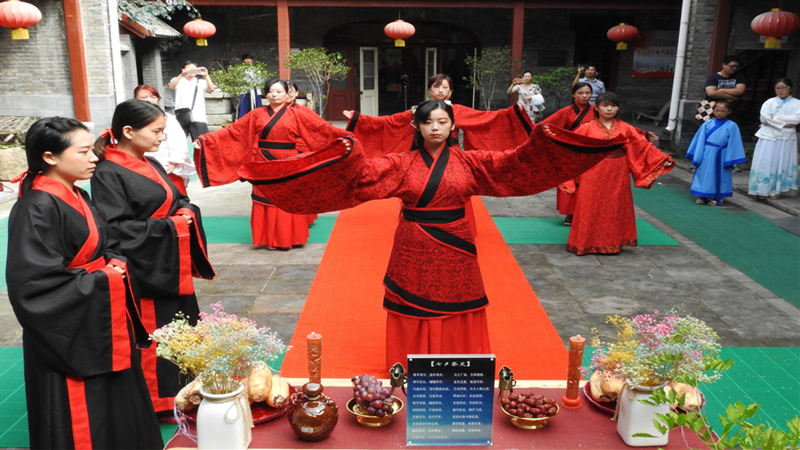
The equivalent to Valentine's Day in
China is Qixi, or the Seventh Night Festival, which falls on the seventh day of
the seventh lunar month each year. According to Chinese lore, Zhinu, a heavenly
king's daughter, and Niulang, a poor cowherd, fell in love, married and had
twins. When Zhinu's father learned of their marriage, he sent his queen to bring
Zhinu back to the stars. Upon hearing the cries of Niulang and the children,
the king allowed Zhinu and Niulang to meet once a year on Qixi.
During Qixi, young women prepare
offerings of melon and other fruits to Zhinu in hopes of finding a good husband.
Couples also head to temples to pray for happiness and prosperity. At night,
people look to the heavens to watch as stars Vega and Altair (Zhinu and
Niulang, respectively) come close during the star-crossed pair's annual
reunion.
6. England
“Happy Valentine’s Day” English
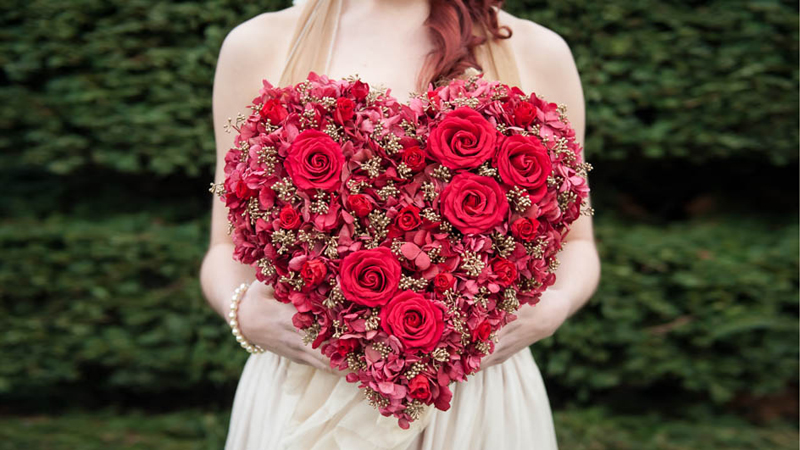
On the eve on Valentine's Day, women
in England used to place five bay leaves on their pillows -- one at each corner
and one in the center -- to bring dreams of their future husbands.
Alternatively, they would wet bay leaves with rosewater and place them across
their pillows.
In Norfolk, Jack Valentine acts as a
Santa of sorts for Valentine's Day. Children anxiously wait to hear Jack
Valentine knock at their doors, and although they don't catch a glimpse of Old
Father Valentine, children enjoy the candies and small gifts left on their
porches. And couples are gifted exhotic, masterpice floral designs.
7. Philippines
“Masaya Araw Ng Mga Puso” Filipino
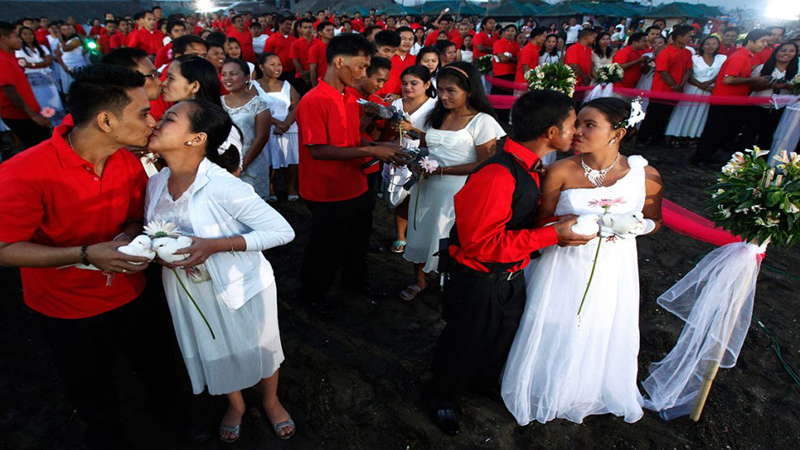
Festival of Love! While Valentine's Day celebrations in
the Philippines are similar to celebrations in Western countries, one tradition
has swept the country and led to thousands of couples sharing a wedding day on
February 14th. Mass wedding ceremonies have gained popularity in the
Philippines in recent years, leading hundreds of couples to gather at malls or
other public areas around the country to get married or renew their vows en
masse.
8. Italy
“Buon-San-Valentino” Italian
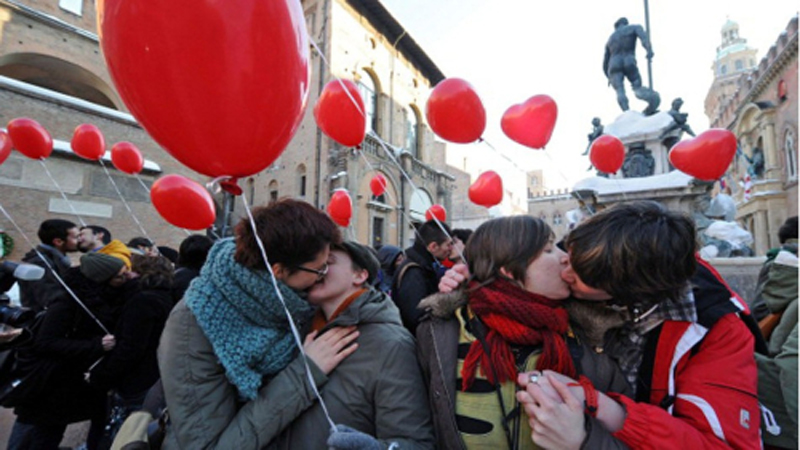
Originally, Italians celebrated
Valentine's Day as the Spring Festival. The young and amorous gathered outside
in gardens and such to enjoy poetry readings and music before taking a stroll
with their beloved.
Another Italian Valentine's Day
tradition was for young, unmarried girls to wake up before dawn to spot their
future husbands. The belief was that the first man a woman saw on Valentine's
Day was the man she would marry within a year. Or he'd at least strongly
resemble the man she would marry.
Today, Italians celebrate Valentine's
Day with gift exchanges between lovers and romantic dinners. One of the most
popular Valentine's Day gifts in Italy is Baci Perugina, which are small,
chocolate-covered hazelnuts wrapped with a romantic quote printed in four
languages.
9. Brazil
“Feliz Dia Dos Namorados” Portuguese
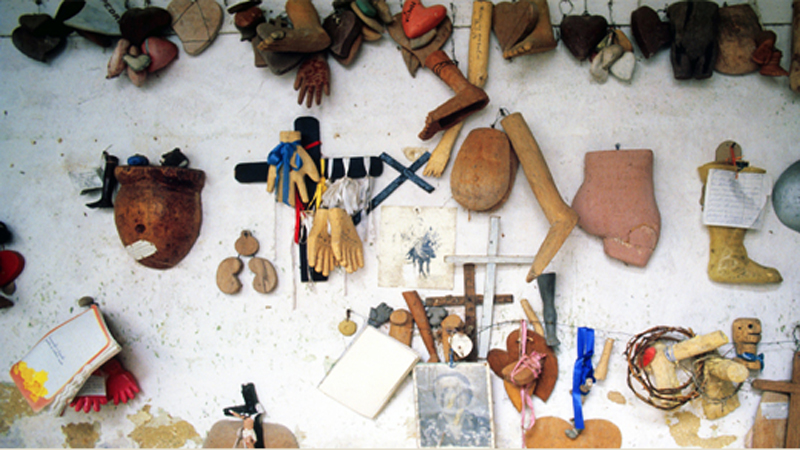
With Carnival held sometime in
February or March each year, Brazilians skip the February 14th celebration and
instead celebrate Dia dos Namorados, or "Lovers' Day," on June 12th.
In addition to the usual exchanges of chocolates, flowers and cards, music
festivals and performances are held throughout the country. Gift giving isn't
limited to couples, either. In Brazil, people celebrate this day of love by
exchanging gifts and sharing dinner with friends and relatives, too.
The following day is Saint Anthony's
Day, which honors the patron saint of marriage. On this day, single women
perform rituals called simpatias in hopes that St. Anthony will bring them a
husband.
10. South Africa
“Gelukkige Valentynsdag” Affrikkans
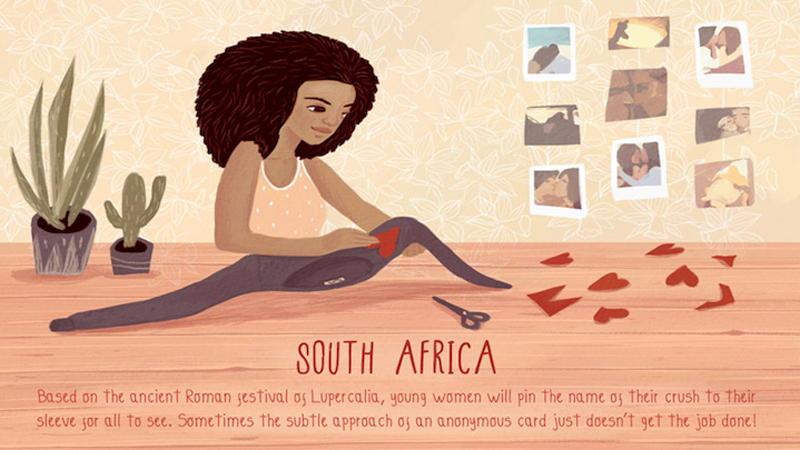
Like many parts of the world, South
Africa celebrates Valentine's Day with festivals, flowers and other tokens of
love. It's also customary for women in South Africa to wear their hearts on
their sleeves on February 14th; women pin the names of their love interest on
their shirtsleeves, an ancient Roman tradition known as Lupercalia. In some
cases, this is how South African men learn of their secret admirers.
11. Germany
“Alles Gute Zum Valentins” German

Some German traditions, such as men
giving red roses to the women they love, are similar to American traditions.
Germans also often exchange Valentine's Day cards and chocolates, but one
tradition that is uniquely German is the gifting of large gingerbread heart
cookies
12.
Spain
“Feliz Dia De San Valentin” Spanish
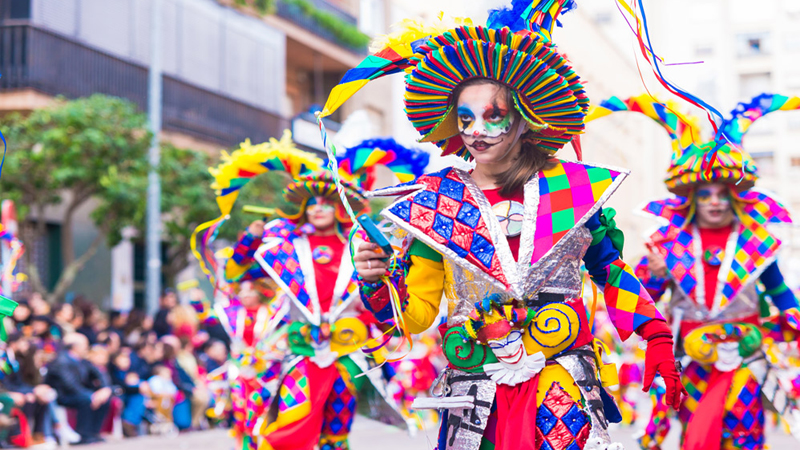
In Barcelona and the whole Catalonia, couples rejoice their love on April 23, when the nation celebrates St. George’s Day or La Diada de Sant Jordi – Catalonia’s national day. This public holiday is also known as El Dia de la Rosa (The Day of the Rose) or El Dia del Llibre (The Day of the Book), and the main event is the exchange of gifts, usually roses and books, hence the Catalan saying “A rose for love and a book forever”. As expected, during this time of year, a myriad of stalls selling roses and books are set up all over the region; public squares are brought to life by all sorts of performers; and most of the book stores and cafes organize readings. This is also the day when Barcelona’s Palau de la Generalitat opens its doors to the public. San Valentin Falls during Spain’s Carnival Season.
On February 14th, Spain’s carnival season is
in full swing, so why not make the most of it with a trip to the Canary
Islands, Cadiz, or Sitges, where the country’s most spectacular festivities
take place. Expect colorful street parades, unique processions, fireworks, and
lots of good times. Día de los
Enamorados is a great time to visit the Land of Cervantes, but the truth is,
you don’t need a reason to get caught up in the fire and romance of Spain. Take in the beauty of historic Seville from a
horse-drawn carriage; stroll around the majestic Alhambra at sunset; and get
lost amid secret cobbled alleyways and tiny plazas in the country’s charming
lost-in-time villages. From stellar dining
to ancient baths, an abundance of romantic experiences await couples in
colorful Barcelona, whereas Madrid is teeming with spectacular parks and
gardens that inspire love. Wild,
deserted beaches invite horseback riding and long, relaxing walks along the
Atlantic, and La Rioja – with its spectacular scenery, sprawling vineyards, and
quaint bodegas – provides an idyllic backdrop for lovers in search of a
peaceful retreat.
13.
Ireland
“Valentines Sásta Lá” Irish
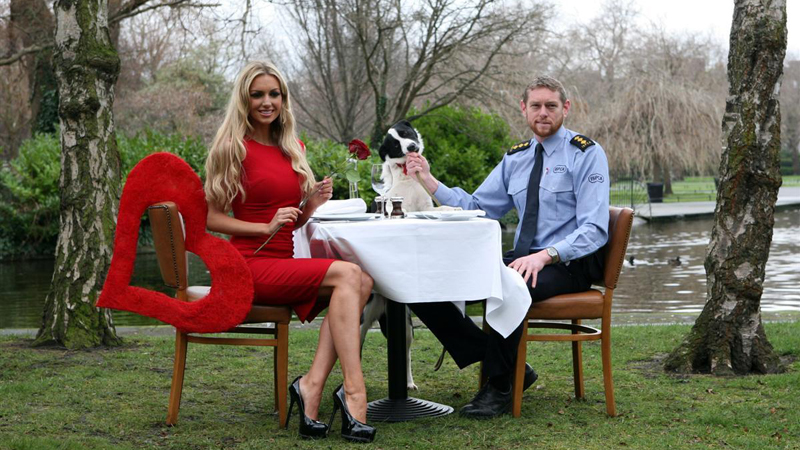
The romantic spirit of Saint Valentine
lives on in Ireland…in fact, the earthly remains of Saint Valentine himself are
believed to rest in Whitefriar Street Church, Dublin. A special shrine in the church is devoted to
this most romantic of saints, who risked so much to unite lovers. Many couples
go there to feel his spirit; in fact, some couples believe their relationship
will be blessed by a visit to his final resting place…Throughout the Emerald
Isle, other romantic rituals add a touch of Irish spirit to Valentine
celebrations. For example, many Irish couples enjoy incorporating the Claddagh
tradition into their gift-giving.
Exchanging Claddagh Rings is one of the most enduring traditions of the
Irish people. These tokens of affection can also be used as engagement rings or
wedding bands, and they are worn by men and women alike. Let’s take a look at the legend of the very
first Claddagh Ring, so we can see how it has come to represent undying love
and faithfulness for centuries…
The Claddagh Story-- Tara's Diary
Claddagh Charm:
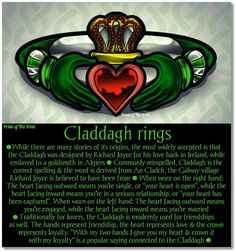 The Claddagh story began in Galway,
where an Irish fisherman named Richard Joyce was born and raised. In time,
Joyce sailed all over the world to make his living, and he was unlucky enough
to be kidnapped at sea and sold into slavery.
Forced to work in Algiers for a Moorish goldsmith, he learned how to
create exquisite pieces out of the most precious metals. During his
enslavement, he never forgot his true love, Margaret, who also waited
faithfully for his return. In her honor,
he created a special ring which featured a crowned heart, gently clasped by two
tiny hands. The heart was a symbol of love and loyalty, and the hands that held
it seemed to offer all manner of romantic promises and hopes…In time, Joyce was
released from slavery, through the help of the English King, William III. The
fisherman-turned-goldsmith returned to Galway and had a joyous reunion with
Margaret. He offered her the ring he had
made, and this symbol of their devotion became an integral part of Irish
culture and tradition.
The Claddagh story began in Galway,
where an Irish fisherman named Richard Joyce was born and raised. In time,
Joyce sailed all over the world to make his living, and he was unlucky enough
to be kidnapped at sea and sold into slavery.
Forced to work in Algiers for a Moorish goldsmith, he learned how to
create exquisite pieces out of the most precious metals. During his
enslavement, he never forgot his true love, Margaret, who also waited
faithfully for his return. In her honor,
he created a special ring which featured a crowned heart, gently clasped by two
tiny hands. The heart was a symbol of love and loyalty, and the hands that held
it seemed to offer all manner of romantic promises and hopes…In time, Joyce was
released from slavery, through the help of the English King, William III. The
fisherman-turned-goldsmith returned to Galway and had a joyous reunion with
Margaret. He offered her the ring he had
made, and this symbol of their devotion became an integral part of Irish
culture and tradition.
14.
Finland
“Hyvää Ystävänpäivää” Finnish

By all appearances everything seems exactly as you would expect leading up to February 14th. Little pop up stalls and stores swamped in all things pinkish, hundreds of heart-shaped balloons and chocolates everywhere you turn, and busy people running about carrying Valentine emblazoned shopping bags. Oh and I better not forget all the advertising, the shops would hate for you to forget! Seems like your typical February, right? There is a familiar type of excitement in the air, accompanied by all the hype and happiness, but this is where you’ll find the similarities stop.
Things are done a little differently. In Finland Valentine’s Day
translates to and is celebrated as “Friends Day” (Ystävänpäivä) Yes, you heard
that right! Not friends with benefits type of day, just regular ol’ friends
day… You can imagine horror you might feel when a work mate offers you
a love heart chocolate and a romantic type card. Giving a big hug and saying
happy Valentine’s Day then just walking off. Lost for words? Then everything back to normal going about a day
without any awkwardness. Others saying it to each other
as well. Valentine’s Day in Finland celebrates
friendship which is actually really sweet. Anyone that considers you a friend
will say happy Valentine’s Day to you and usually give you a chocolate or
something. Sometimes acquaintances say
it too, just for the sake of saying it. It’s technically “Friend’s Day”. The
traditions of giving romantic gifts has basically poured over from other
countries, same gifts but different meanings.
So if you’re ever in Finland on Valentine’s Day, and someone whispers it
to you or gives you something don’t get too excited or alarmed! They just think
you’re a nice person!
15.
Vietnam
“Valentine Hanh Phúc Ngày” Vietnamese
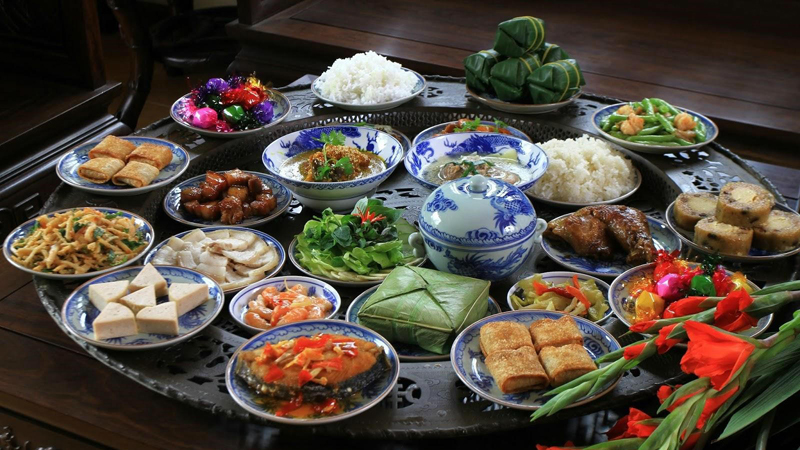
Valentine's Day in Vietnam is a
relatively recent tradition for Vietnam, a few years ago on 14 February was a
day like any other, but nowadays, shopping malls, restaurants, cinemas, shops
and markets incite us to follow this foreign tradition. In Vietnam the St.
Valentine's Day is known as the feast of love (Ngày Gần Tinh Nhan), although
young people call it Ngày Valentine. In
Vietnam Valentine's day is celebrated the day 14 February, and although there
are no rules attached to this regard, Vietnamese couples exchanged gifts, or at
least the man buy a gift to a woman who loves.
Quintessential gift for Valentine's day are flowers, but chocolate, a
greeting card, stuffed animals, etc. is also very common For lovers Valentine
Vietnamese dine out, go to movies, etc.. For a special occasion, Vietnamese
women are dressed in their best clothes, with what Valentine is a great time to
see Vietnamese dresses (Ao Dai) everywhere.
16.
Malaysia
“Kekasih Hari Gembira “ Malaysian
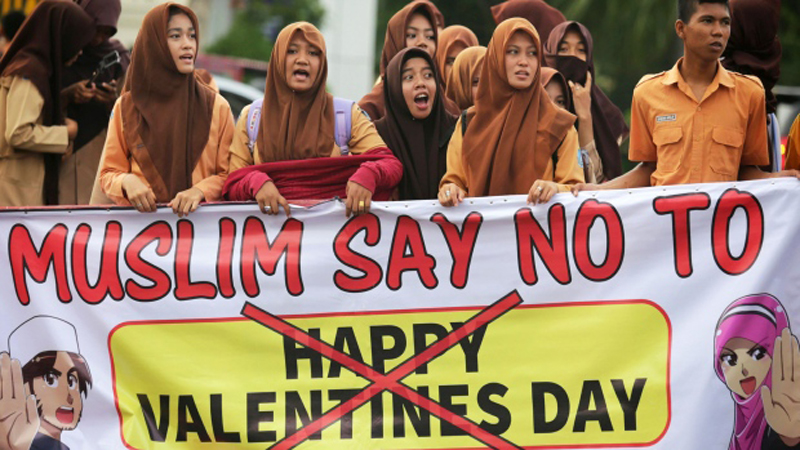
But Valentine’s Day is under assault
in other Muslim cultures as well, where it is criticized as Christian, not
cultural.
In Malaysia, the assault on Valentine’s Day has been even harsher than in Iran, where the Islamic Republic has tried to stop sales of Valentine cards and gifts. The Malaysian religious authorities this month arrested more than 100 Muslim couples for defying a ban on any activities marking Valentine’s Day The Islamic authorities in Malaysia in 2005 issued a fatwa warning Muslims against celebrating Valentine’s Day, saying it could lead to vice, especially pre-marital sex. The edict has been enforced since then. The federal-level Malaysian Islamic Development Department, better known as Jakim, also launched a campaign entitled Mind the Valentine’s Day Trap, urging Muslims to stay away from all programs associated with Valentine’s Day. The Selangor State Islamic Religious Department, one of several such authorities, conducted a raid with the help of local police on budget hotels from midnight to 6 a.m. Valentine’s Day. Officials arrested more than 200 Muslims for celebrating Valentine’s Day, the department said in a statement, without elaborating. It said 80 of them would be charged in the Sharia Court for defying the department’s ban against the celebration of lovers’ day. The rest either dispersed or agreed to be counseled. Explaining the ban on Valentine’s Day celebrations, Jakim said Muslims are not allowed to observe the special day as it is linked to Christianity, which irked non-Muslim political parties and other groups. The Malaysian Chinese Association, a political party, said people who linked the holiday to immoral activities were “bigots” and “enemies of the state.”
The reaction in the Malay community is mixed.
Some Malays urged their friends via Facebook and Twitter not to observe the
holiday but instead prepare themselves for the celebration of the Prophet
birthday the following day. 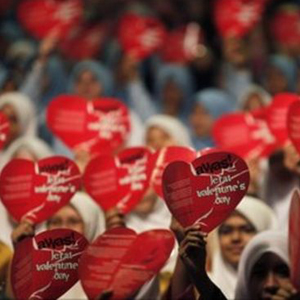 But not all
Malays agreed that Valentine’s Day celebrations would necessarily lead to
immoral acts. “Happy V Day. Am so grateful for a government that
micro-manages my life and does all my thinking,” human rights lawyer Malik
Imtiaz Sarwar wrote with sarcasm in a Twitter message. Countries like Iran and Saudi Arabia have
also banned Valentine’s Day celebrations. (See last week’s Iran Times, page
one.) In India, Hindu radical groups
held demonstrations in some states against Valentine’s Day. In the world’s most populous Muslim country,
Indonesia, the top Islamic body appeared to have softened its hardline stance
towards Valentine’s Day. Indonesia Ulama
Council secretary-general Ichwan Sam told the Jakarta Globe that while
Valentine’s Day is not part of Islamic culture, the council would allow people
to celebrate it if they choose to do so.
“Valentine’s Day is just a fad among youngsters and, just like any fad,
it will fade away,” he said. Valentine’s
Day was originally Saint Valentine’s Day, and was a saint’s day in the Roman
Catholic calendar. But it had no link to
romantic love in the church and was removed from the Catholic calendar in 1969
because nothing about Saint Valentine could be verified—and probably because
the Vatican was displeased with the link to romance. The link to romantic love began as a secular
tie around 1400 and was never sanctioned by the church. Thus, the link to Christianity is in the name
only; it has never had anything to do with the faith.
But not all
Malays agreed that Valentine’s Day celebrations would necessarily lead to
immoral acts. “Happy V Day. Am so grateful for a government that
micro-manages my life and does all my thinking,” human rights lawyer Malik
Imtiaz Sarwar wrote with sarcasm in a Twitter message. Countries like Iran and Saudi Arabia have
also banned Valentine’s Day celebrations. (See last week’s Iran Times, page
one.) In India, Hindu radical groups
held demonstrations in some states against Valentine’s Day. In the world’s most populous Muslim country,
Indonesia, the top Islamic body appeared to have softened its hardline stance
towards Valentine’s Day. Indonesia Ulama
Council secretary-general Ichwan Sam told the Jakarta Globe that while
Valentine’s Day is not part of Islamic culture, the council would allow people
to celebrate it if they choose to do so.
“Valentine’s Day is just a fad among youngsters and, just like any fad,
it will fade away,” he said. Valentine’s
Day was originally Saint Valentine’s Day, and was a saint’s day in the Roman
Catholic calendar. But it had no link to
romantic love in the church and was removed from the Catholic calendar in 1969
because nothing about Saint Valentine could be verified—and probably because
the Vatican was displeased with the link to romance. The link to romantic love began as a secular
tie around 1400 and was never sanctioned by the church. Thus, the link to Christianity is in the name
only; it has never had anything to do with the faith.
17.
Somalia
“Valentine’s Day Faraxsan” Somali
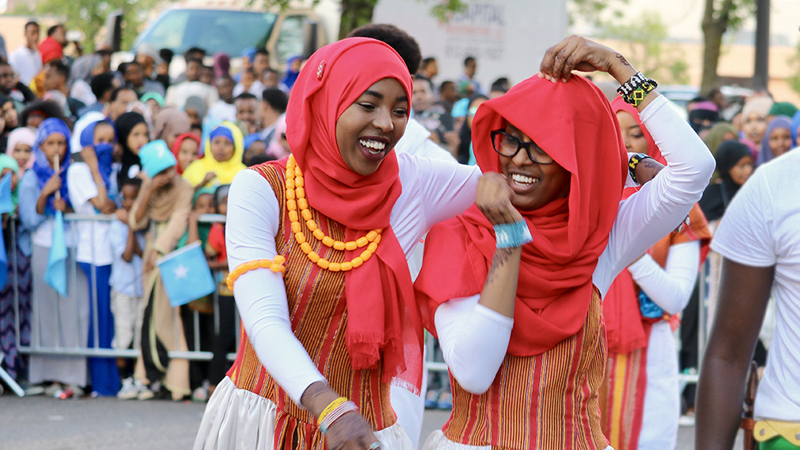
Love is celebrated on the 14th day of
every month. On this day, Koreans eat black noodles. They celebrate Valentine's
Day, but they also have a “Sweetness Week” in July where kisses are exchanged
for treats. The women in Africa pin their crushes name to their sleeve for all
to see.
18.
Iceland
“Hamingjusamur Valentines Dagur” Icelandic

No Valentine’s Day? Konudagur and Bóndadagur (Woman’s Day and Husband’s Day) are Iceland’s way of celebrating love but they’re different from Valentine’s Day in one crucial way. Instead of celebrating the love between two individuals, they focus on celebrating the individuals in love. Especially Konudagur is becoming increasingly competitive with Valentine’s Day, since it usually lands within a week or two of it on the calendar. Now, you should already have celebrated Husband’s Day back in January, but you still have a chance to switch your romantic celebrations to the second Sunday after Feb. 14th this year. You will find special Konudagur deals everywhere in the city! Iceland is a popular honeymoon destination, and with good reason. Just imagine yourself all cuddled up inside, under a blanket in a fancy hotel on the border of the Arctic Circle.
Icelanders love their
summerhouses. These are wooden cottages, situated in the middle of nowhere,
next to beautiful mountains and lakes. They have a small kitchen, bathroom, proper
heating and usually a hot tub. Perfect for a short winter break. You can go for
hikes in the surroundings or just relax in the hot tub with candles and a glass
of wine. What is more romantic than
kissing under the northern lights? The dark February month is a good time for
spotting them. Sometimes you can see them from the city, but it’s also nice to
go for a short drive to the lighthouse Grótta. With the city lights behind you,
you will have the best conditions for northern lights viewing. Grillmarkaðurinn is a fashionable restaurant
located on Lækjargata. Foodies will love this place, because of the beautiful
presentation of their dishes and the custom grill that heats up to 1200 °C.
They cook with local ingredients and buy most of their produce straight from
the farm. Highly recommended for anniversary dinners.
19.
Sweden
“Glad Alla Hjärtans Dag” Swedish
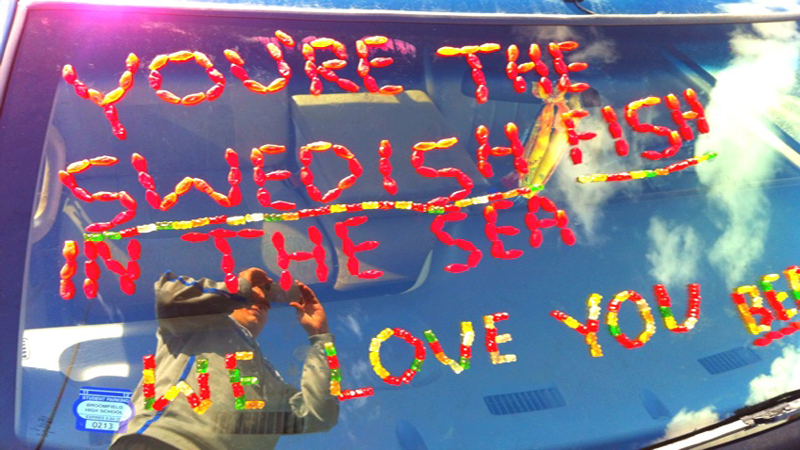
In Sweden, Valentine’s Day is a
relatively new phenomenon. Despite the fact that St. Valentine was from Rome,
the holiday has traditionally been celebrated primarily in the United States,
Canada, Mexico, the United Kingdom France, and Australia. It didn’t really make
its way to Sweden until the 1960s, when The holiday has caught on in the big
cities. The parks and waterways are decorated with lights and bright colors,
and in places like Stockholm, it’s easy to find romantic places to walk, dine,
enjoy the sunset, or just relax with your loved one.
As in the United States, gifts are a
big part of the holiday. Candy and flowers are welcome, though instead of
roses, it’s more traditional in Sweden to give bouquets filled with a selection
of beautiful and exotic flowers. Candles, spa visits, and gift baskets are also
popular, and younger people are likely to give each other electronic gadgets.
On Valentine’s Day, just as on every other day in Sweden, pastries are a popular option. Swedish people love their pastries so much that they also celebrate Cinnamon Roll Day in October, so it’s not surprising that they’d celebrate Valentine’s Day with pastries. In particular, there’s a delicious little pastry called the vanilla heart, essentially a heart shaped cookie with vanilla cream in the middle.
20.
Russia
”Glad Alla Hjärtans Dag” Russian

St. Valentine's Day came to Russia in early 1990's and it's a relatively new holiday. Although it is not observed as a public holiday it is widely celebrated and remains one of the most popular romantic holidays in Russia. At some schools children exchange valentines and hold special events, concerts and parties to celebrate the Valentine's Day. Night clubs arrange special parties for couples to celebrate the holiday in a very romantic way. Some shops, services and businesses in Russia create St. Valentine's Day special offers, when they offer sales or discounts on certain services or products. In lieu of the Valentine's day the windows of the shops are decorated with hearts, flowers and many different gift items to attract the shoppers. Valentine's Day in Russia is a wonderful opportunity to share your true feelings with the loved ones. Any gift that expresses your love and care for your sweetheart will be very well received. Flower giving is a common practice in Russia. Giving flowers to acknowledge special occasions and holidays is considered one of the most romantic gestures in Russian culture.
 Red roses are a symbol of passionate love and romance –
they are the most popular flowers on St. Valentine's Day. Usually a woman would receive flowers and a
box of her favorite chocolates or candy from her boyfriend or husband, and
maybe a small romantic gift on Valentine's Day. Romantic dinner is also very
popular in Russia on Valentine's Day, whether it's a homemade candlelit dinner
or a dinner at a fancy restaurant.
Another popular gift is a Valentine's Day card with a romantic message
inside. The message can be as personal and romantic, as you like. You can write
your own message in prose or verse and you can also find many different ideas
online.
Red roses are a symbol of passionate love and romance –
they are the most popular flowers on St. Valentine's Day. Usually a woman would receive flowers and a
box of her favorite chocolates or candy from her boyfriend or husband, and
maybe a small romantic gift on Valentine's Day. Romantic dinner is also very
popular in Russia on Valentine's Day, whether it's a homemade candlelit dinner
or a dinner at a fancy restaurant.
Another popular gift is a Valentine's Day card with a romantic message
inside. The message can be as personal and romantic, as you like. You can write
your own message in prose or verse and you can also find many different ideas
online.
So, there you have it. No matter where you go, you can always find a
way to say “Happy Valentine’s Day”.
